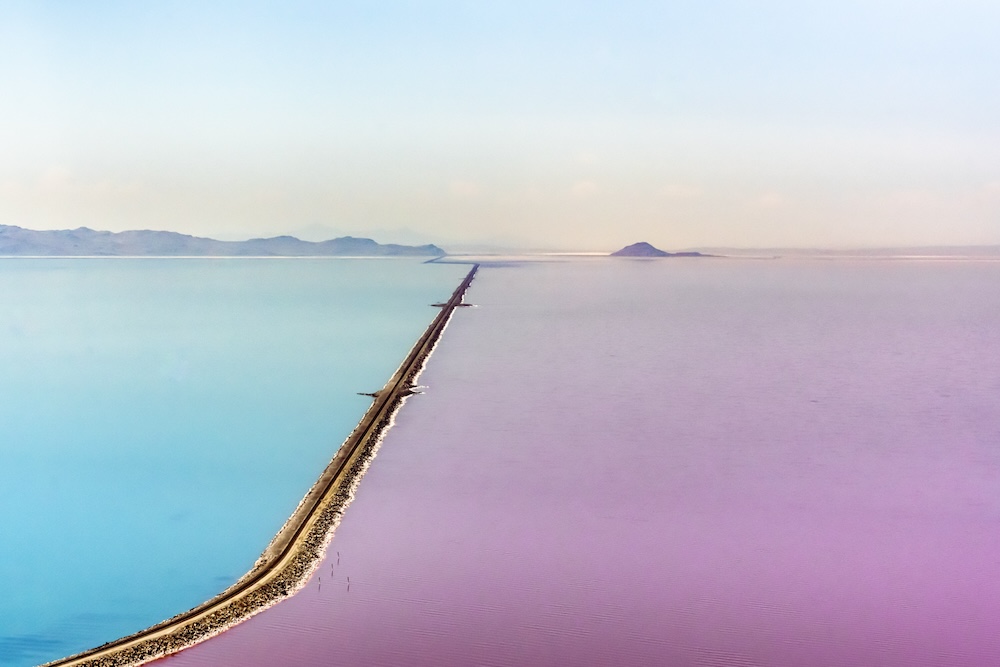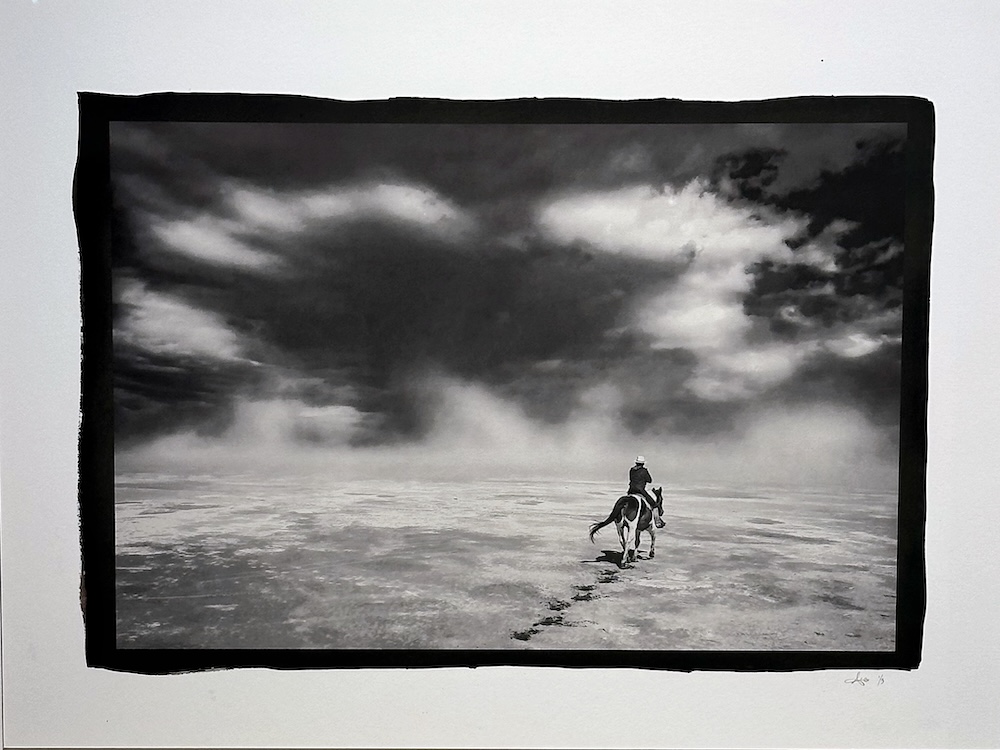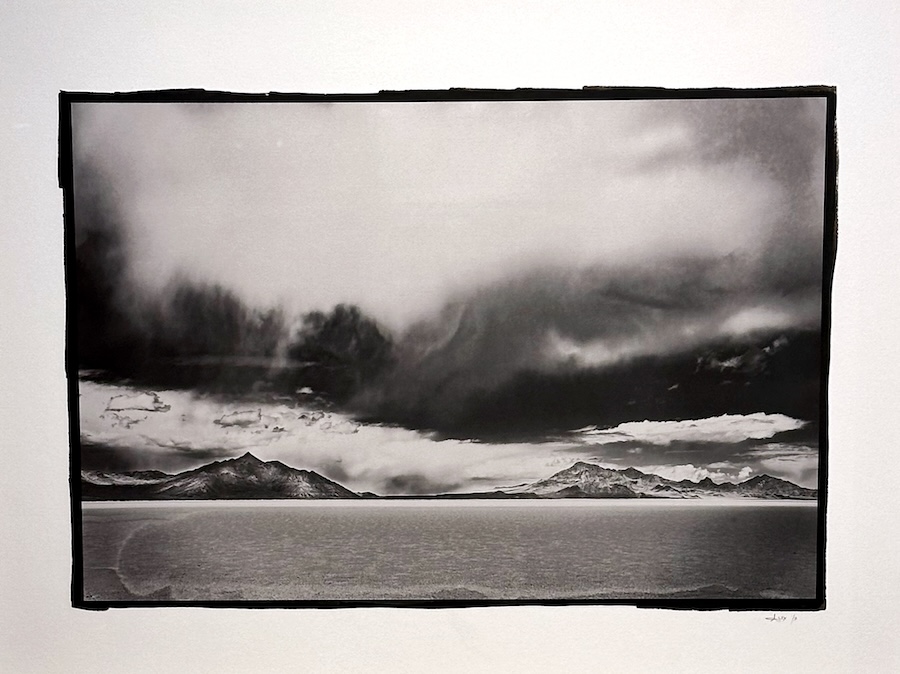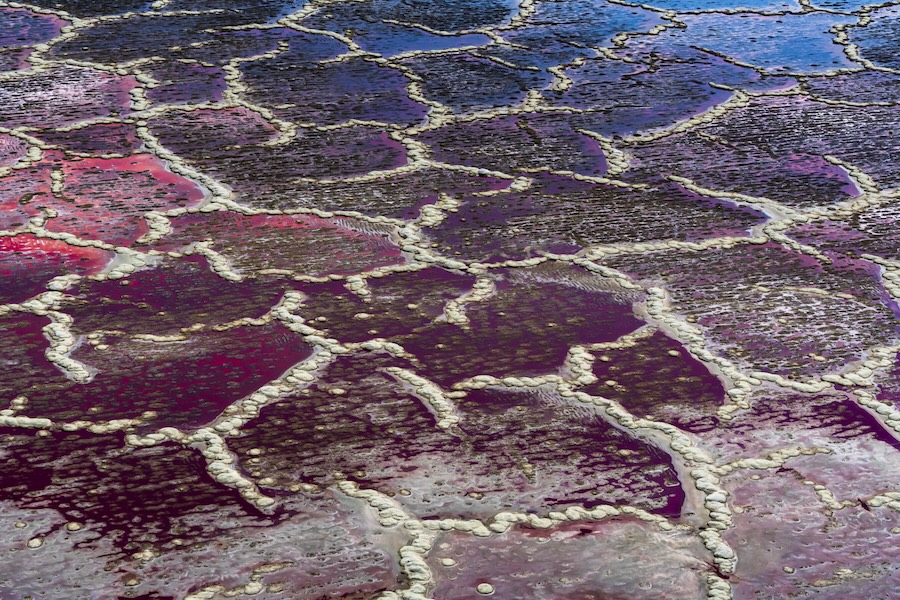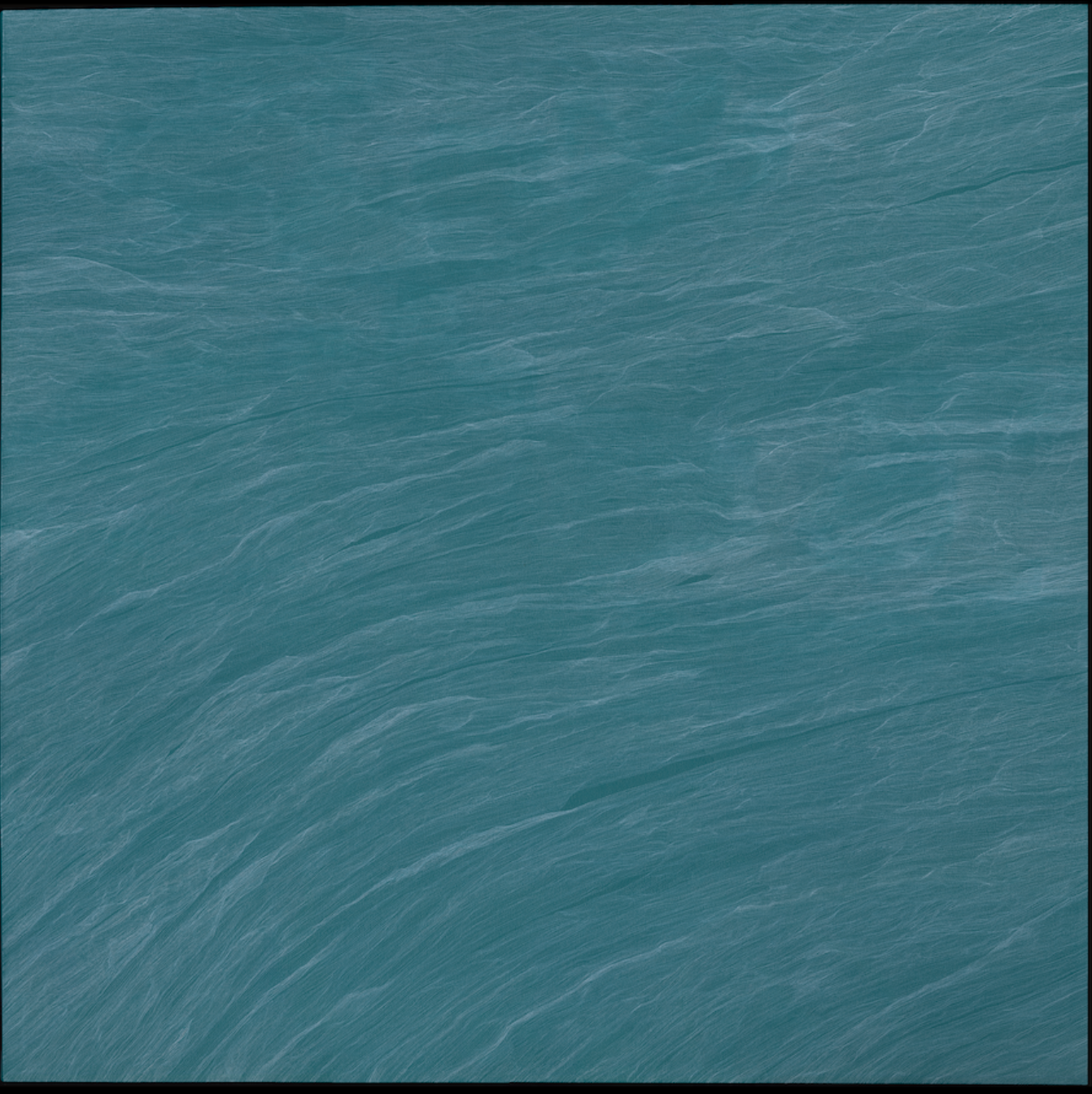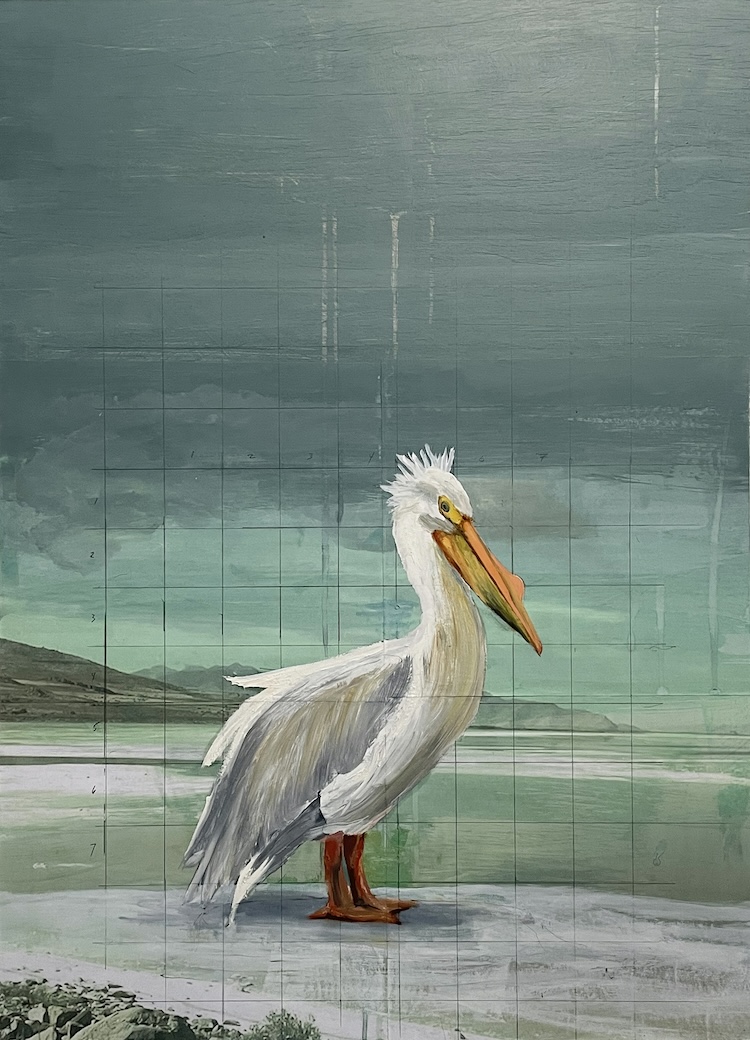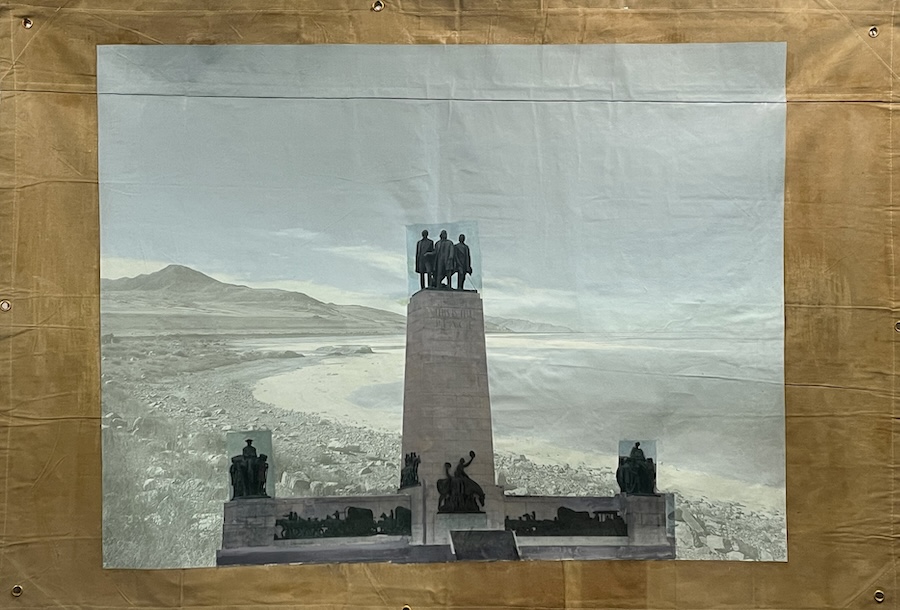The Great Salt Lake is the largest saltwater lake in the Western Hemisphere, serving as a vital resource for both human and wildlife activity. However, alarming trends indicate a substantial decline in water levels, with the lake experiencing a two-thirds volume reduction since 1985. Without immediate intervention, the lake could vanish within the next five years, causing an environmental and economic collapse of a place many call home.
As a contribution to the crucial Great Salt Lake conversation, Modern West will open Lake Effect, a six-person exhibition with artworks depicting the current state of the lake’s decline along with the detrimental aftermath that may ensue. This group show will feature Modern West represented artists Al Denyer, Tom Judd, Eric Overton and Diane Tuft, along with guest artist Alexandra Fuller. Lake Effect will also feature artwork, text and poetry from activist and author Terry Tempest Williams. The exhibition will be on display January 19 through March 2, 2024.
Al Denyer is an artist from Bath, England now based in Salt Lake City, Utah. Denyer’s work has routinely taken a focus on the topography of northern Utah, using intricate lines and inspiration from traditional cartography practices. In her new body of work titled Surface Area, Denyer shifts gears into a study of both the surface and what lies beneath the Great Salt Lake. She utilizes broader brushstrokes to replicate geographic fluctuations of the lake bed and the unseen halophilic bacteria and archaea which cause the north arm of the lake to appear pink.
Alexandra Fuller is a photographer, filmmaker and writer working in Utah. Her work primarily takes the form of large-scale conceptual landscapes and subjective documentary photographs. Her new photography series titled Dissolution includes handmade salt prints contemplating the Great Salt Lake at the edge of its current era. The final images portray the dramatic lake landscape on cotton rag paper soaked in a solution containing salt from the lake itself.
Tom Judd is an artist originally from Salt Lake City, Utah now based in Philadelphia, Pennsylvania. Judd’s work largely emphasizes memory and frequently uses collage as a way to depict fragmentations of recollection. His new series of paintings explore personal memories of visiting the Great Salt Lake, intertwined with his current experience of watching it quickly diminish from afar. He contemplates the importance of home and what we must do to preserve it.
Eric Overton is a photographer and filmmaker based in Utah. Overton’s work references the irreverent discoveries of the American Western landscape through precarious historical photographic methods. In his recent series of photographs, Overton utilizes his ambrotype process to document the surrounding landscape of the Great Salt Lake. The ambrotype plates are a direct reflection of the light, bringing a sense of urgency into preserving this land which has held significant importance throughout history.
Diane Tuft is a photographer currently based in New York City. Tuft has always been fascinated by how environmental factors shape the Earth’s landscape, and capturing this through her camera has been a guiding principle in her work. In her photography series titled Entropy, Tuft explores how many areas of the Great Salt Lake are visually changing and rapidly drying. This series questions what may happen locally and globally if the lake soon dries up.
Terry Tempest Williams is an activist and author from Utah. Williams has been called "a citizen writer," a writer who speaks and speaks out eloquently on behalf of an ethical stance toward life. A naturalist and fierce advocate for freedom of speech, she has consistently shown how environmental issues are social issues that ultimately become matters of justice. I Am Haunted by What I Have Seen at Great Salt Lake is her New York Times essay which poetically ties the Great Salt Lake to both local and personal history.
“If we can shift our view of Great Salt Lake from a lake to be avoided to a lake we cherish; from a body of wasted water to an ancient body of wisdom,” writes Williams. “...not to exploit, dam, and dike, but to honor and respect as a sovereign body, our relationship and actions toward the lake will be transformative.”
The opening artist reception for Lake Effect will be held on Friday, January 19, from 6-8 PM. In conjunction with the opening, Modern West will host a Creative Call to Action to Save our Great Salt Lake panel on Saturday, January 20, from 12-2 PM. The panel will include Grow the Flow Executive Director Ben Abbott, Great Salt Lake Institute Director Bonnie Baxter, Grow the Flow Government Relations Coordinator Jake Dreyfous, Great Salt Lake Collaborative Director Heather May and Diane Tuft, a celebrated photographer and environmentalist represented by Modern West. The panel will be moderated by Anne Palmer with the Contemporary Arts Group of Utah.
Modern West has created this exhibition to bring together a collection of unique voices during a time where awareness is imperative to keep Salt Lake City habitable. A percentage of proceeds from artwork sales will be donated to saving the Great Salt Lake.



